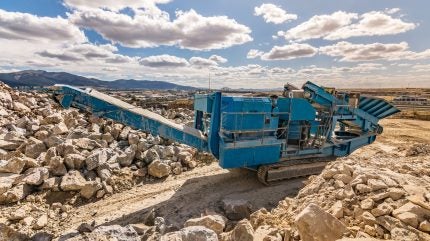Sign up for daily news updates from CleanTechnica on email. Or follow us on Google News!
In 2015 world leaders gathered in Paris and sang praises about their collective ability to set measured goals to stop anthropogenic climate change. Limiting global warming to 1.5°C would require “rapid and deep and in most cases immediate GHG emission reductions in all sectors,” the Intergovernmental Panel on Climate Change (IPCC) said. A followup 2018 special report from the IPCC suggested that, to extract enough carbon dioxide from the atmosphere to bring the temperature rise below the limit, carbon removal methods would be needed.
Yet those technological methods still are yet to be tested at scale, and many consequences of such a decarbonization approach make it controversial.
How do we reconcile the need to reduce enormous amounts of emissions from the atmosphere with the largely untested and often disputed carbon removal approach? Yes, we need critical strategies to achieve our net zero and climate goals. However, hope in the future of carbon removal technologies must not distract from the urgency of drastic greenhouse gas emissions reductions.
Yet, perhaps there is a compromise.
Nature-Based Carbon Removal
The two main possibilities for carbon removal are quite different from each other.
Nature-based solutions address societal problems in ways that benefit both people and nature and can play a significant role in addressing the climate and biodiversity crises we currently face.
Such actions are broadly categorized as the protection, restoration, or management of natural and semi-natural ecosystems; sustainable management of working lands and aquatic systems; or, the creation of novel ecosystems. They:
- provide adaptation to climate change effects, such as reducing flooding, protecting coastlines against sea-level rise, or creating cool spaces in cities;
- enhance biodiversity by creating improved and more resilient ecosystem functioning; and,
- improve human well-being by ushering in economic benefits through monetary value and job creation.
Nature-based solutions build upon what nature is already doing as part of its cycles of life that inherently remove carbon dioxide from the atmosphere. Think of forests and oceans and they way they function as carbon sinks — they absorb more carbon than they release as part of their natural processes and ecosystems.
Soil carbon sequestration — aka regenerative agriculture — gives a boost to soil so it can absorb and store more carbon than industrial agriculture has provided. Many techniques help to protect soil as a carbon sink — low- or no-till practices, perennial crops, cover crops, managed livestock grazing practices, and adding compost or crop residues to land.
Half of the carbon we pump into the atmosphere each year is reabsorbed by the planet, so, if we were to restore and protect those systems, we could complement tech-based actions to eliminate fossil fuels.
Carbon Removal Technology
In March, as part of President Biden’s Investing in America agenda, the US Department of Energy (DOE) today announced 24 semifinalists to receive a total of $1.2 million to scale up their carbon dioxide removal technologies. The idea was to help catalyze the development of carbon dioxide removal markets, demonstrates rigorous monitoring, measurement, reporting, and verification practices through third-party scientific validation, and it provides a model for workforce and community benefits for high-quality credits.
Carbon removal is different from carbon capture and storage, which captures emissions at the source — like a power plant or a cement producer — to prevent them from entering the atmosphere in the first place. Carbon capture is a form of emissions reduction rather than carbon removal. Carbon removal tech is quite complicated. Companies that hope to invest in carbon removal technology solutions as mechanisms to complement their emissions reduction efforts look at a variety of options. They include:
- Direct air capture: Uses large fans to move air through a filter to absorb CO2.
- Direct air carbon capture and storage: CO2 is extracted from the air and stored in geological formations deep underground.
- Bioenergy with carbon capture and storage: Atmospheric CO2 absorbed by plants, the plant material (biomass) is burned to produce energy, and the CO2 released in that process is captured and stored underground.
- Combining direct air carbon dioxide capture technologies and geothermal energy: Large scale carbon dioxide (CO2) removal systems could potentially be supplied with enough energy to remove carbon dioxide from the atmosphere and safely store it underground.
The IPCC has suggested that carbon removal methods have differing potentials for achieving negative emissions, separate associated costs and side effects, and are at current various levels of development from conceptual to prototypes and early stage products. Moreover, these technologies require huge amounts for research and development to reach the necessary cost and scale to affect global warming.
What’s Important to Get Us to 1.5°C Emissions Levels?
If carbon removal technologies are to be considered viable climate solutions, they need a life-cycle analysis (LCA) to assess the product’s environmental impact. Michael Barnard has written about this point here on CleanTechnica, calling carbon removal technologies “an overly hyped, overly hoped for solution that isn’t and won’t scale remotely economically.”
A LCA review of carbon removal technologies found that “LCA is often applied in inconsistent, misleading, and ambiguous ways.” Here is a summary of their rationale.
- Distracts from cutting emissions: Policy makers could use carbon removal technologies as a safeguard to postpone climate mitigation measures. Instead, what’s needed is for companies to prioritize deeper operational change and reducing emissions.
- Feasibility at scale: In the Net Zero Emissions by 2050 Scenario, direct air capture is scaled up to capture almost 60 [million] MT CO2/year by 2030, amounting to a 600-fold increase in the amount of carbon over eight years. A whole bunch of new carbon removal companies would be necessary to manage such expectations and needs.
- Cost: The cost is estimated at between $125 and $335 per metric ton of carbon for a large-scale plant, according to an International Energy Agency report.
- Land, water, and energy required: Some of these technologies are energy intensive and need substantial land and water to operate, affect water-scarce areas, and affect communities that already bear the majority of environmental harms.
- Environmental impacts: Siting locations may experience pollution increases. Carbon storage raises concerns about potential underground leaks, polluted groundwater, and triggering seismic activity.
Final Thoughts
With the benefits of nature-based carbon sequestration and the possible negative impacts of carbon removal technologies, it seems to make sense to emphasize to companies that their sustainability plans should be directed toward wholesale reductions in carbon emissions and their overall environmental footprint. Certainly investing in nature-based carbon removal makes great sense, as to do so is to integrate with the planet’s own cycles and ecosystems.
Perhaps we need to look at anchoring the carbon market to the true cost of removal, which our CleanTechnica colleague Ben Schulz argues offers manifold benefits. Hit ’em in the wallet, eh? That usually makes an impact.
Chip in a few dollars a month to help support independent cleantech coverage that helps to accelerate the cleantech revolution!
Have a tip for CleanTechnica? Want to advertise? Want to suggest a guest for our CleanTech Talk podcast? Contact us here.
CleanTechnica uses affiliate links. See our policy here.
CleanTechnica’s Comment Policy




